La Rouvière, Marseille’s city within the city, in the background, with the Stade Vélodrome landmark — home to the local football team Olympique de Marseille — in the foreground (Photo: Gilles Paire/Getty Images).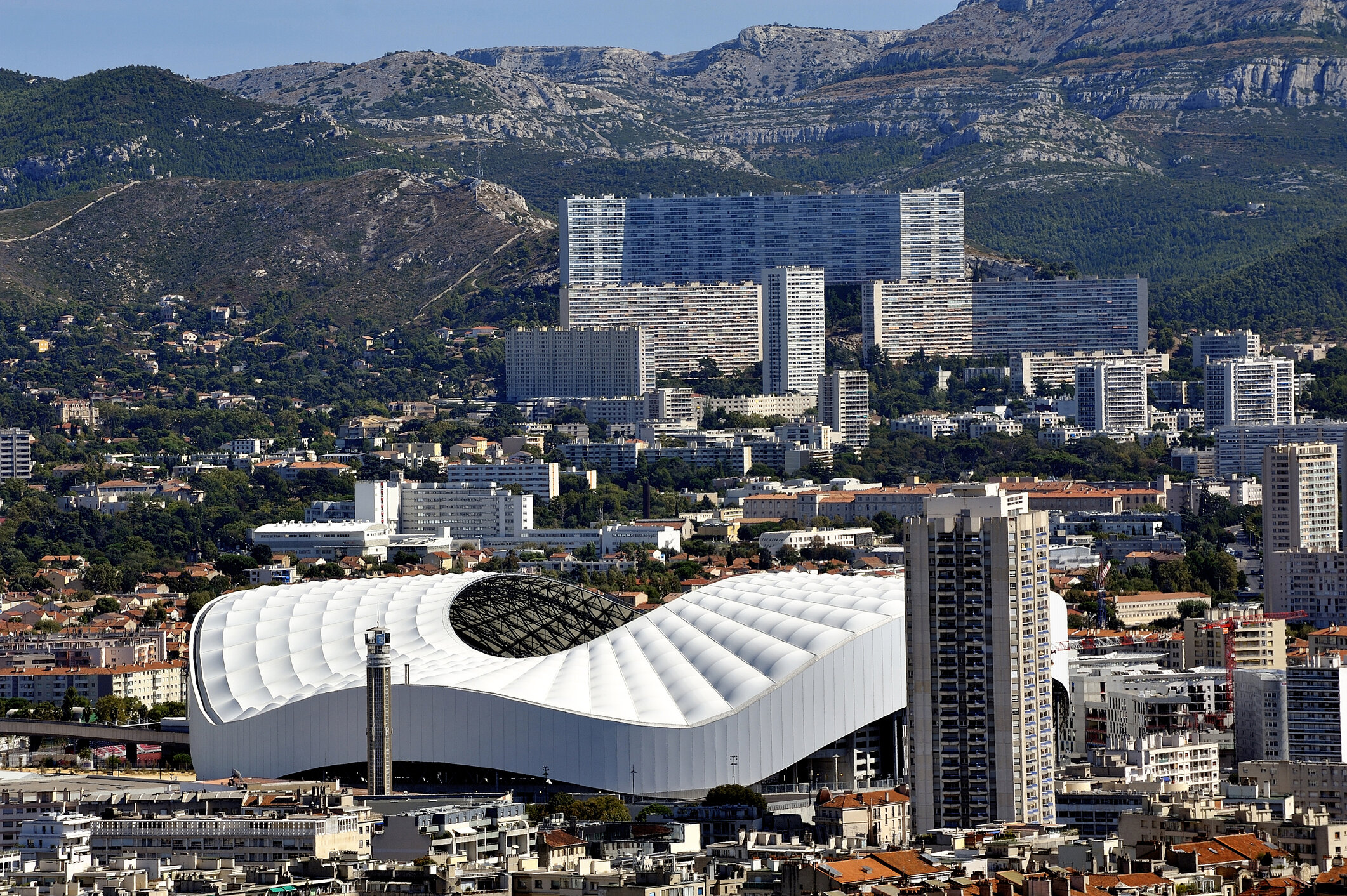 <
<
Mary Fitzgerald
Of the many stories Marseille likes to tell about itself, perhaps the most enduring is that of its openness. Founded by Phocaean sailors more than two millennia ago and shaped by waves of migration from across and beyond the Mediterranean ever since, France’s second city is home to many who proudly draw on multi-faceted identities. The Swiss-born poet and novelist Blaise Cendrars was fascinated by its dense layers of often complicated histories, both communal and personal. “Marseille belongs to whoever comes from the open sea,” he once wrote in a declaration of love for a city so often unloved in France due to its reputation for corruption and crime. It’s a beguiling line that is frequently cited by local writers and politicians, most recently Michèle Rubirola who included it in her inauguration speech after she was elected Marseille’s first female mayor last summer.
How to square that idea of Marseille with the fact the city is home to one of the world’s highest per capita concentrations of gated communities? This statistic was noted in Le Grand Puzzle, an urban study conducted by a team led by Dutch architect Winy Maas as part of Manifesta, the European biennial which last took place in Marseille in 2020. Unlike other major French cities, Marseille does not have rings of banlieues — the name given to often impoverished suburbs — on its hinterland. In Marseille the banlieues are inside the city périphérique, as locals put it. The economic disparities of France’s oldest metropolis are drawn not in circular form but from north to south, with the hardscrabble quartiers nord contrasting with a more affluent southern belt.
Next to a map illustrating the speed at which closed residences have sprung up archipelago-like across the city since 2010, the authors of Le Grand Puzzle — under the caption “Urbanisms of Fear” — observed that no other metropolitan area in Europe contains so many gated communities. “While the motivations for the creation of gated developments may differ between the northern and southern districts [of Marseille], in their quest for safety, gated communities further exacerbate spatial fragmentation and inequality, and limit social mixing.”
Detail from Le Corbusier’s Cité Radieuse.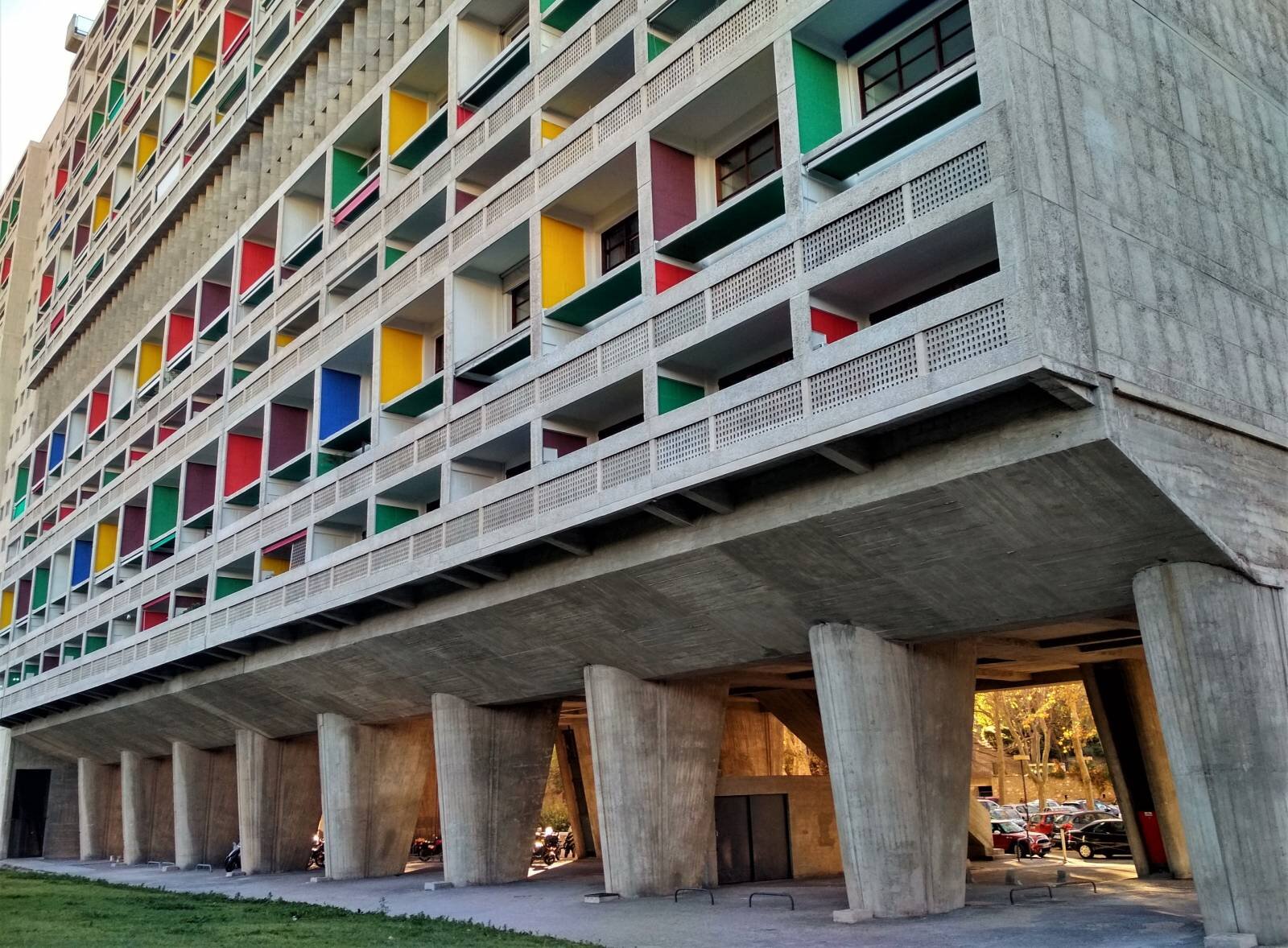 <
<
The phenomenon may have accelerated over the past two decades but the idea of self-contained residential complexes — not all of them shut off from the outside world — has a long history in Marseille, a city whose post-war and post-colonial trajectories left an indelible mark on its urban landscape. It was post-war Marseille, badly in need of redevelopment, where architects like Le Corbusier came to experiment. Le Corbusier considered his Cité Radieuse, completed in Marseille’s 8th arrondissement in 1952, a “vertical garden city,” and it inspired similar structures elsewhere in Europe. Now a UNESCO World Heritage site, Cité Radieuse includes a hotel, shops and various cultural facilities, as well as residential apartments. It is a space that is public as well as private.
It’s a rather different story at La Rouvière, a sprawling compound of around 2,200 housing units, making it one of the largest condominiums in Europe. Its white towers dominate the hillsides of Marseille’s southern flank, just before the city gives way to the wild beauty of the Calanques, a series of rugged inlets declared a national park in 2012. The construction of La Rouvière — once known as “Super Marseille” — in the early 1960s coincided with the end of the Algerian war of independence. Across the Mediterranean fled the so-called “pieds-noirs” — descendants of the French colonialists — many of whom settled in Marseille and other parts of southern France. Some bought apartments in La Rouvière off plan before they left Algeria. Those of pieds-noirs background, most of them with roots in Algiers and Oran, have dominated the complex ever since. “A colony of former colonialists,” quips one local.
Media headlines sometimes refer to La Rouvière — home to almost 9,000 residents — as a “city within a city” or a “fortress,” noting that there is a guard for every entrance, the gates are closed at night, and surveillance cameras were installed a number of years ago. Inside, almost everything a resident might need is available without ever having to leave. In among the 30 hectares of green spaces and 4 kilometers of roads you can find a shopping mall, a nursery, two schools, a post office, banks, and a tennis club. A shuttle bus runs between the buildings.
The far-right has polled well in the local constituency over the years, a fact often noted in media coverage of the unique dynamics within La Rouvière, as is talk of self-segregation and unwritten rules regarding renting or selling to those who are Black or of Arab origin. In 2016, the then-president of the residents’ association told Le Monde: “The presence of the [returned pieds-noirs] meant that [La Rouvière] remained calm because the immigrants knew they were not welcome. It still is and that it is a very good thing.”
Cité Radieuse and La Rouvière are both distinct products of particular historical eras in Marseille. The more recent growth of gated communities — where living spaces are cordoned off by grids, fences and automatic gates — is a complex phenomenon in this city of almost one million people. It cannot be reduced simply to the notion of “bunkerized ghettos” for the wealthy, says Elisabeth Dorier, who leads an Aix-Marseille University research team mapping the trend since 2007.
According to a study they produced in 2014, almost 30 percent of housing in the city — in the form of more than 1,500 collective residential estates with an average surface area of one hectare — was then located in gated enclaves. Of those, three-quarters have been closed off since 2000. In just over half the cases examined, the residences had been gated a posteriori, sometimes a year later. Around 43 percent were originally constructed as enclosed residences.
Marseille’s poor public transport system means the city is one of the most car-dependent urban areas in France, a key factor in the rise of gated communities. Dorier and her team note that the resulting need for private parking spaces, which are considered more secure, is often cited to justify enclosures.
“Far from the clichés of the welcoming Mediterranean melting pot, large areas [of Marseille], of all social levels, tend to become transformed into mosaics of separate enclaves managed by numerous and poorly coordinated stakeholders (co-owners, service companies, homeowner associations, etc.),” wrote Dorier and her colleague Julien Dario in 2018. They argued that such dynamics can be considered the outset of a French “Privatopia” — a term coined by American political scientist Evan McKenzie — with detrimental effects on the functioning of the city.
“Through the proliferation of urban enclosures, Marseille can be considered as a “testing” ground to study the geography of the combined effects of territorial inequalities, deregulation and the confusion between real estate production and urban development,” they concluded.
Marseille’s Vieux Port and Grande Roue seen from the Saint Victor quarter (Photo courtesy Getty Images).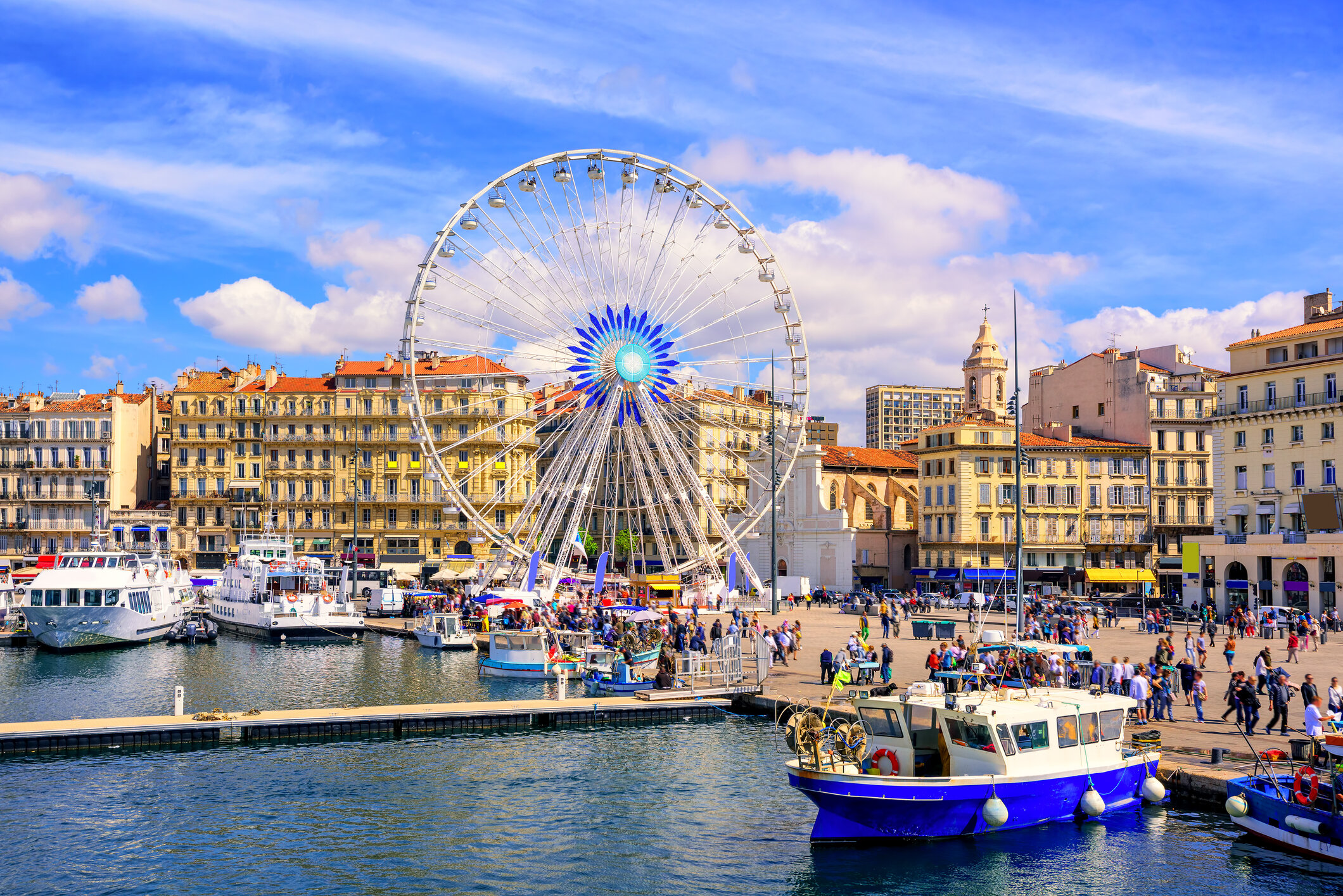 <
<
My first experience of living in Marseille was in a friend’s apartment in a gated residence in Saint Barnabé, one of several Provençal villages long swallowed by the city’s expansion. Built in the 1960s, the complex was located in what real estate ads described as “un beau parc sécurisé.” Residents used a security code to open heavy automatic gates. Since I moved downtown to the Saint Victor quartier next to the Vieux Port, I have lived in a 19th-century building whose front door opens right onto the street. The area is rich in history —Louis XIV built his arsenals nearby, one of Marseille’s most notorious anarchists hid out next door during the 1920s, and American TV chef Julia Child rented an apartment just around the corner a few decades later — but many Marseillais would not consider my residence sufficiently sécurisé. I have lived in several very different cities across the world —among them Belfast, Miami, London, Washington, DC, Amman and Libya’s capital, Tripoli — but I find the preoccupation with security in Marseille particularly striking. Nowhere else have I seen real estate agencies highlight how secure their properties are above most other considerations.
Michèle Rubirola has since been replaced as mayor by her deputy, Benoît Payan, a 43-year-old Socialist who helped create Printemps Marseille, the green-left alliance that propelled Rubirola to the city hall. They inherit the difficult legacy of Jean-Claude Gaudin, the right-wing mayor who stayed in place for a quarter century until his retirement last year. Of the many challenges Payan faces, the question of how people live here is a priority. In 2018, the deaths of eight people killed when two buildings collapsed in the heart of Marseille highlighted the problem of sub-standard housing. Payan and his colleagues want to explore new, more sustainable ways of living together in this, France’s second largest city and one of its most diverse. Others speak of Marseille’s potential as a gateway to the rest of the Mediterranean and further south to Africa.
I choose to live here because, for me, Marseille is a truly Mediterranean city in a way other European cities lapped by that storied sea are not. Marseille is where Europe meets the Maghreb. It’s a mass of contradictions, some intriguing, others infuriating. Can there be a greater contemporary Marseille paradox than the fact an increasing number of its inhabitants appear to want to retreat behind walls, fences and electronic gates? What future for a city supposedly open to the world but where many are closing themselves off to their fellow Marseillais?
<



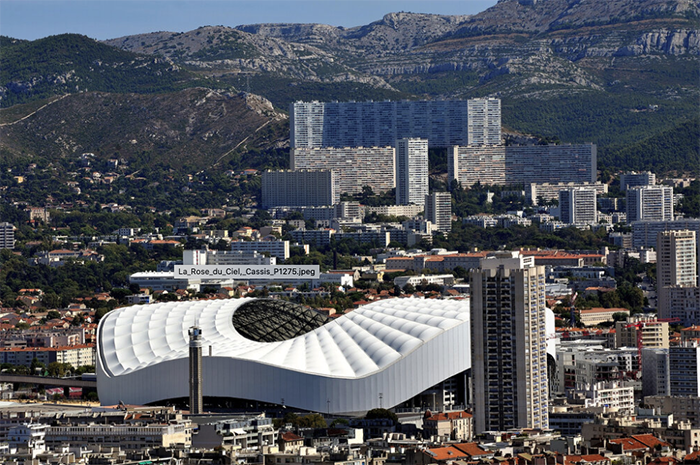

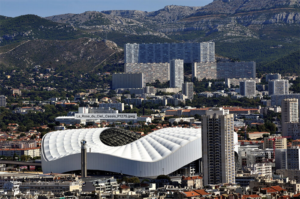
Thank you for such an erudite, thought-provoking article
I will be visiting Marseille for the first time this summer. Reading articles like this will enable me to get more out of the visit than I would have otherwise. Thank you.